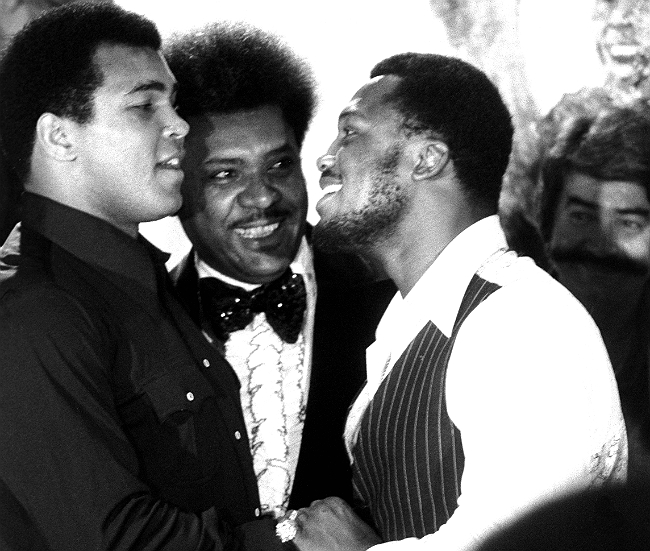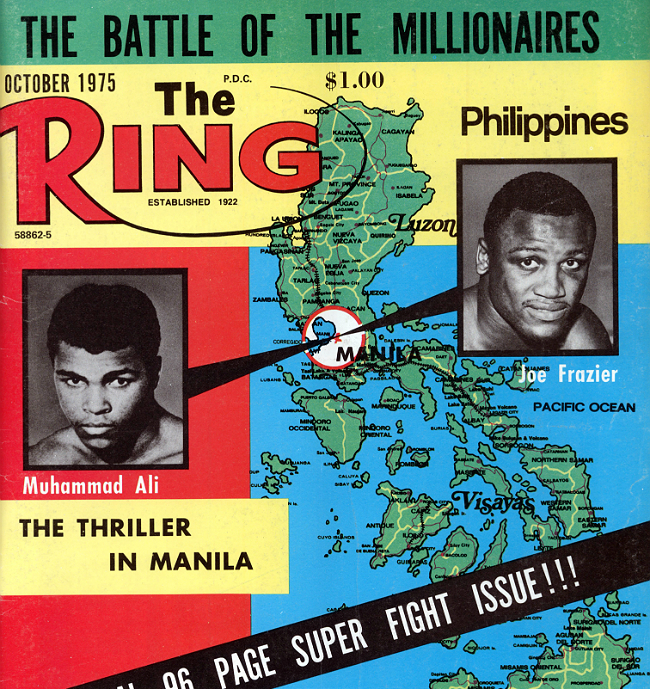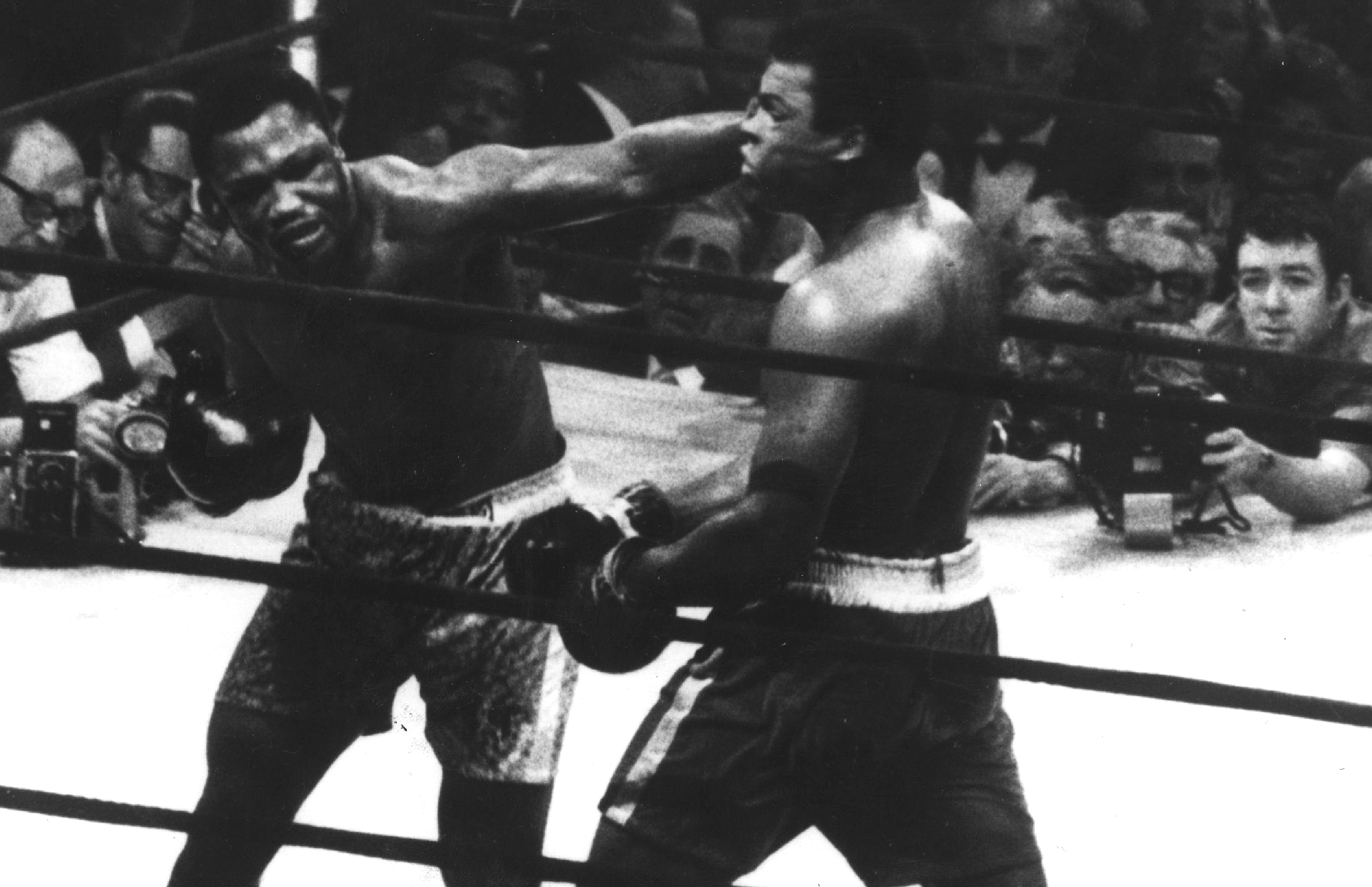
In 1971, Muhammad Ali and Joe Frazier electrified the New York audience at Madison Square Garden in a 15-round boxing slugfest, that was capped off with the champion Frazier knocking down the challenger in the final round before being declared the winner. It was Ali’s first defeat, but the pair would meet one more time in 1974, with neither man serving as the champion. Controversy abounded when the referee of that fight continued to allow Ali the use of questionable grappling tactics, and a premature ending of one round gave Frazier the chance to recover from a pummeling that might have ended the fight.
Due to the split between the two battles, a rubber match was set for the enemies to take place in the Philippines in October 1975. It would go on to be one of the most revered, and brutal bouts in the history of the sport. Here are a few things you may not have known about the legendary “Thrilla in Manila.”
Philadelphia Mayor Frank Rizzo had a hand in the referee selection.
Going into the third bout between Muhammad Ali and Joe Frazier, Frazier’s cornerman, Eddie Futch, was concerned that Ali would be using the illegal tactic of holding his opponent behind the neck during clinches, a move that he had used against Frazier in their second fight, as well as the bout against George Foreman in Zaire, which Ali won. Futch suspected that Ali would try the same maneuver against Frazier in their rubber match, so in the time leading up to the bout in the Philippines, Futch used political connections in getting Zach Clayton — the referee in that Zaire bout who did not prevent Ali from continued use of the tactic — blocked from officiating the Thrilla in Manila.
Along with his role as a referee, Clayton also served in the administration of Philly Mayor Frank Rizzo. Futch convinced Rizzo to tie Clayton up with administrative duties in Philly so he would physically be unable to attend the bout. Instead, and to the dismay of promoter Don King, Filipino referee Carlos Padilla, Jr. was chosen to officiate.

Ali’s infidelity came to a head in Manila.
There are plenty of stories of Ali’s infidelity, but in the days before his fight with Frazier, he courted around a young woman, Veronica, in Manila, while his wife Belinda stayed home in Chicago. Things came to a head when he and Veronica attended a gala at the Presidential mansion in Manila and President Ferdinand Marcos mentioned that his wife Veronica was beautiful. Ali, not correcting him, said that the president’s wife was also beautiful. With media at the event, word eventually reached Belinda that Ali was cavorting around the Philippines with his mistress, posing her as his wife. Belinda took off for the country and confronted Ali at a hotel, which involved a heated exchange where furniture was destroyed. Belinda filed for divorce the next year.
The brutal battle almost killed both men.

The Thrilla in Manila bout was so intensely combative, that it not only changed the career course for both Ali and Frazier — two fighters in the twilight of their careers — it had boxing pundits and analysts wondering if the “sweet science” was too savage. Frazier, known for unleashing ferocious left hooks, snapped Ali’s head back on numerous occasions. Boxing writer Ed Schuyler, Jr. watched from ringside and told the AP that, “Ali took terrible punishment. In the sixth round, he hit him with a hook that almost made it look like his head was on a swivel. Joe just wouldn’t stop.”
At the end of the ninth round, Ali looked like he was on the verge from keeling over on his stool in the corner, telling his trainer, “Man, this is the closest I’ve ever been to dying.”
Frazier, for his part, had become the recipient of numerous head shots, his eyes almost completely swollen shut. After the 14th round, and with Frazier battling though severely limited eyesight, Futch, his trainer, decided to call off the bout. “No, no, no, come on, Eddie!” Frazier protested.
According to Frazier, Ali was also apparently thinking of calling off the bout following the brutality of the 14th round, but it’s a theory that was later disputed by Ali’s trainer Angelo Dundee. “Believe me, it never happened. I’m the only guy talking in the corner, and Muhammad never talked back at me. I would shut him up. No, not a word about quitting. Muhammad didn’t know what quit was.”
After being declared the winner, Ali collapsed back in his stool, the recipient of 14 rounds of bloody warfare.
Reverence and respect.
Following the thrilling conclusion of what is considered one of the greatest pugilistic bouts of all-time, in 1976, the Philippines opened and dedicated the country’s first multi-level shopping mall located next to Araneta Coliseum, where the legendary bout was held. Dubbed Ali Mall, Ali personally gave his blessing to the opening of the facility. It has since been renovated with a food court and state-of-the-art cinemas, and remains a haven for consumers in the country.
In 1981, within weeks of each other, Ali and Frazier decided to leave the fight game. In 2011, Frazier tragically passed away. Several years later, after a statue of Frazier was erected in Philadelphia, Joe Frazier’s son, Marvis Frazier, laid a wreath down on Joe’s grave with an inscription from his greatest foe, Ali.
“To Joe Frazier from Muhammad Ali. Rest in peace, Joe, until we meet again. Next time, we’re not going to fight. We’re just going to hug each other.”
This is an updated version of an article that originally ran in October 2015.






